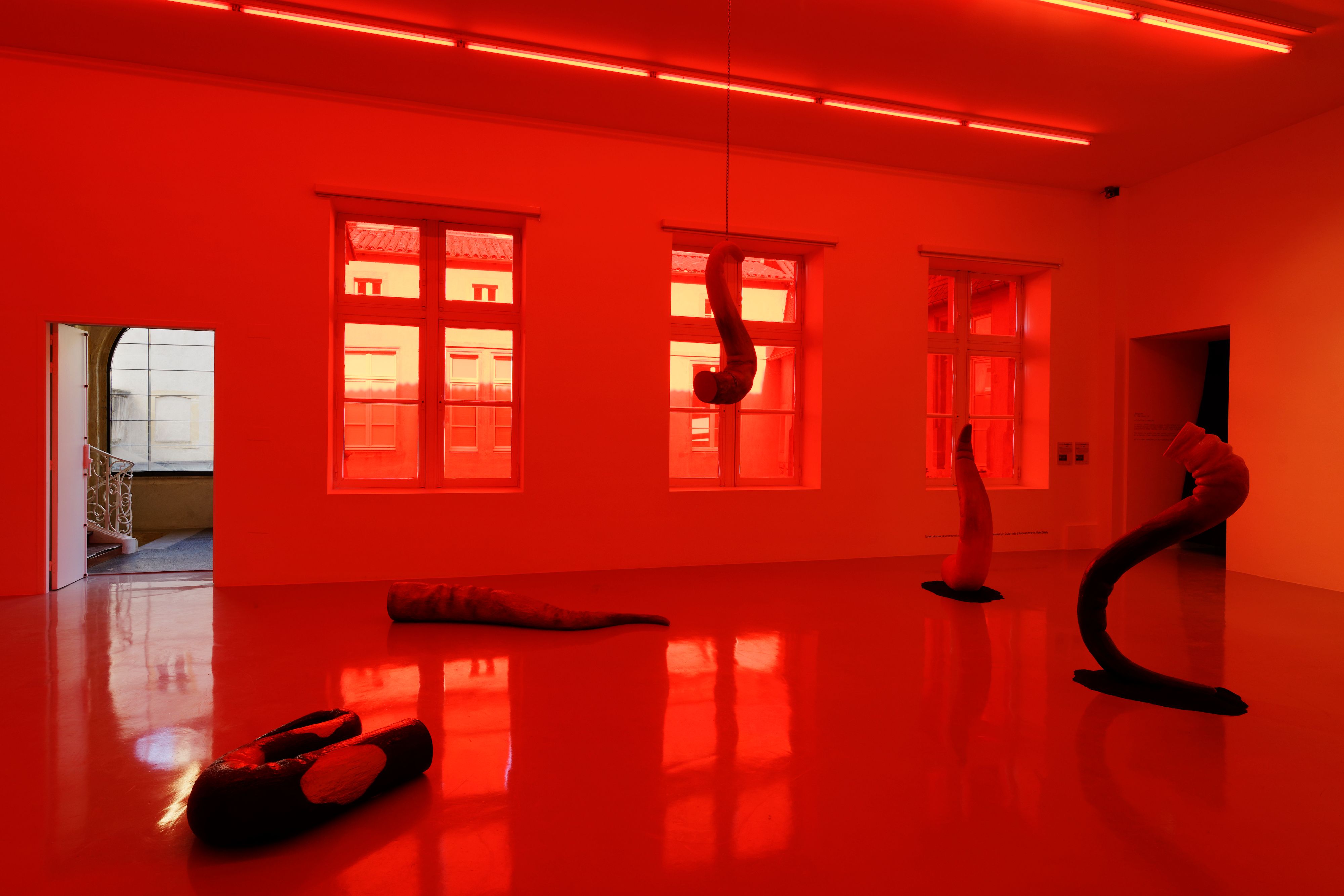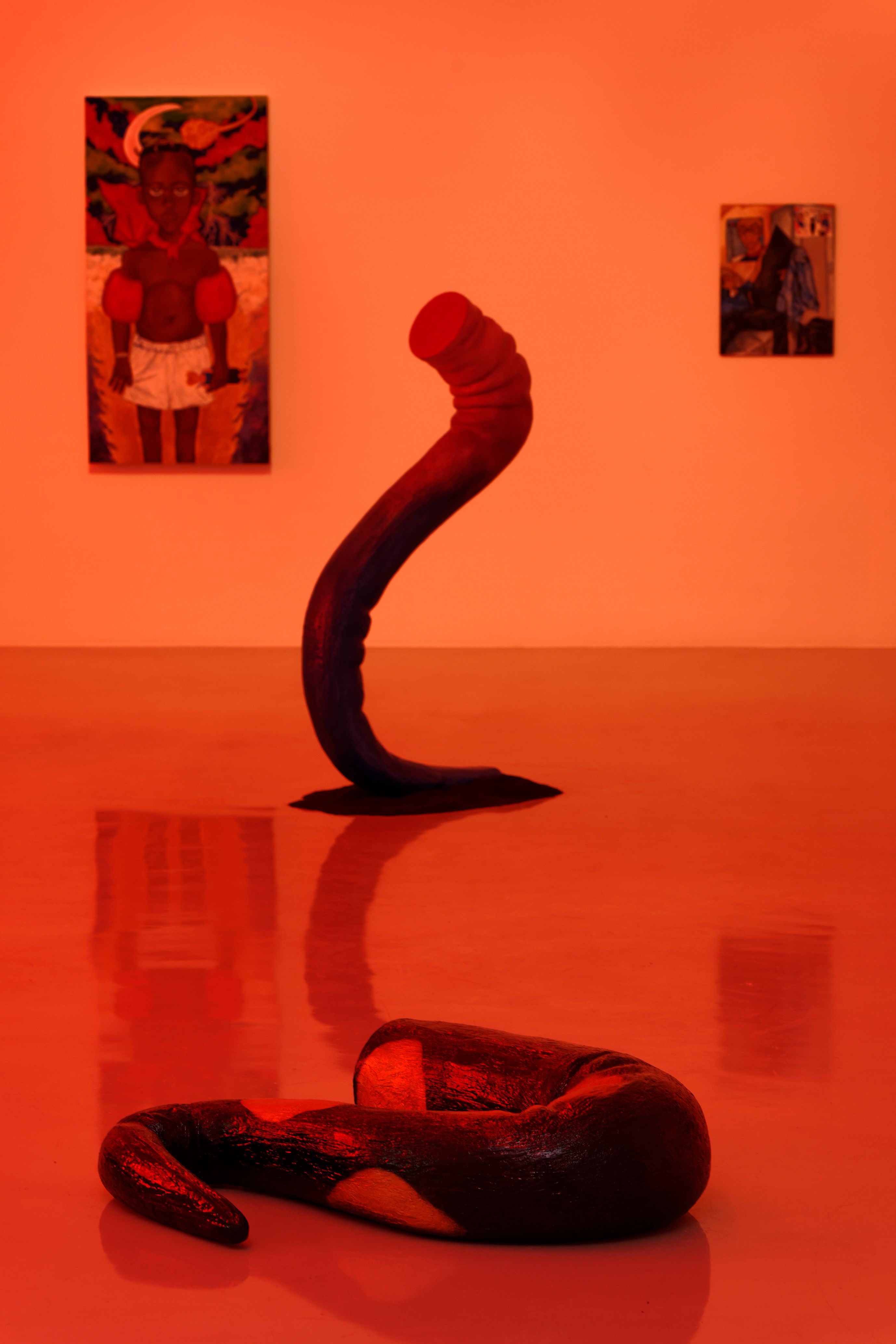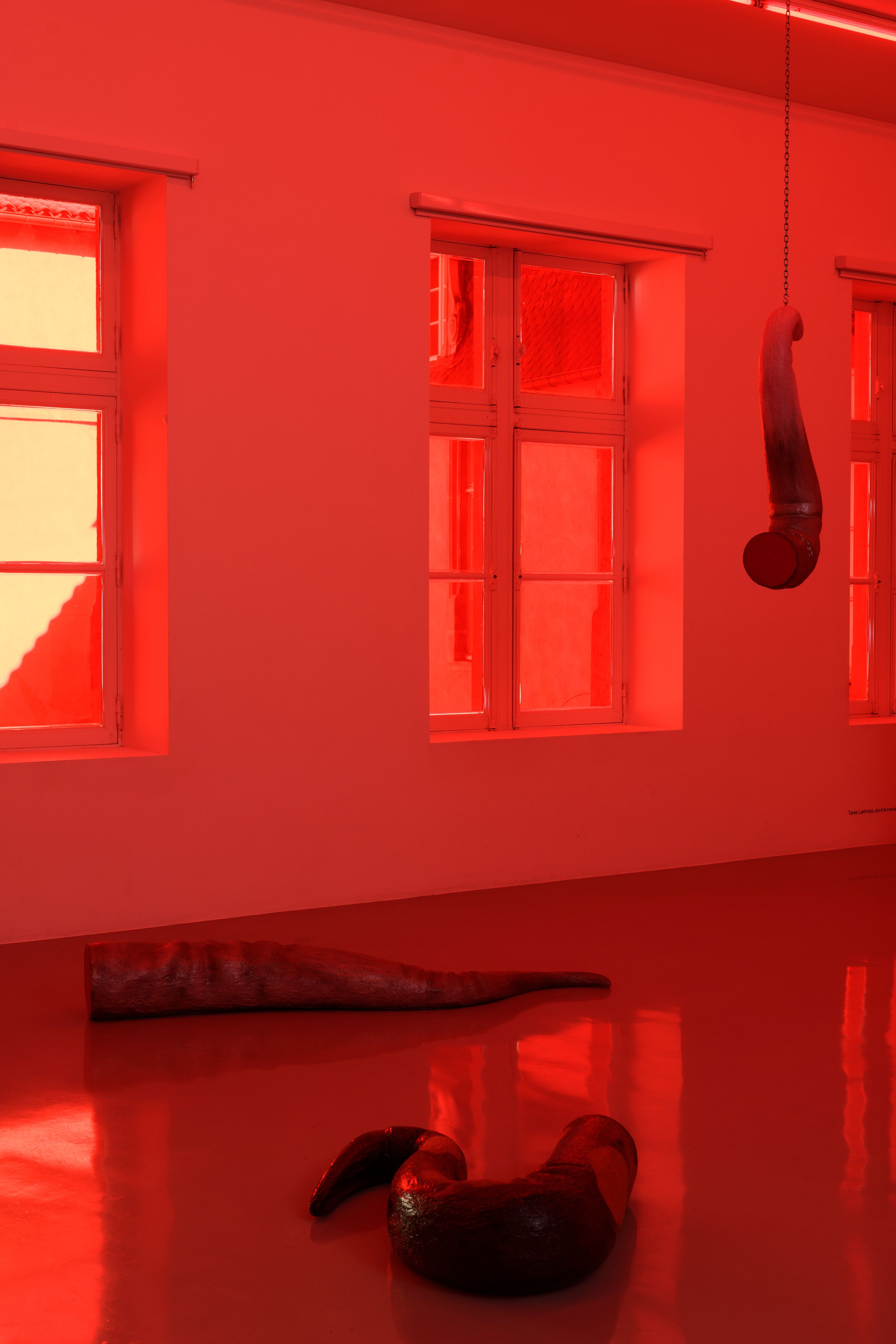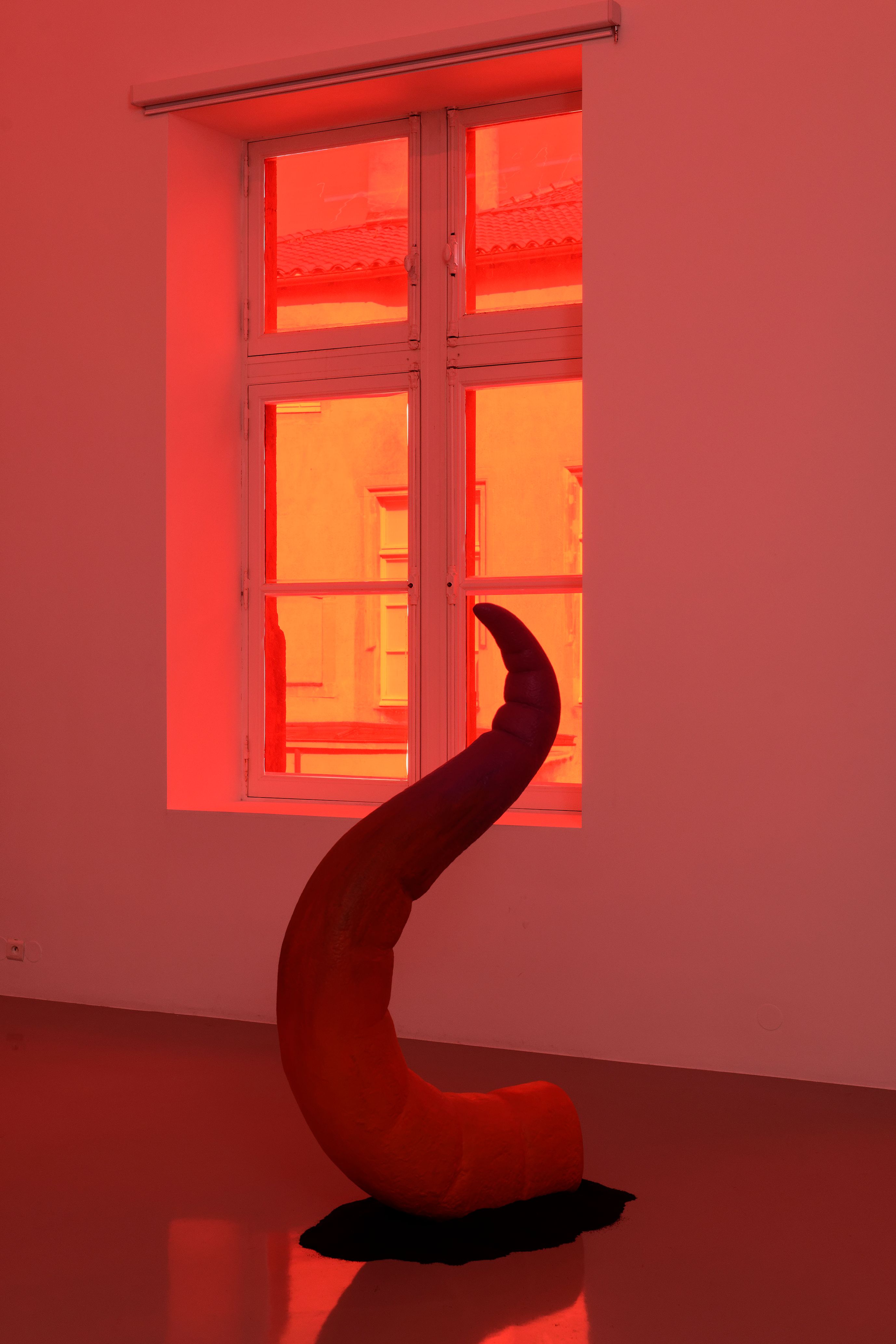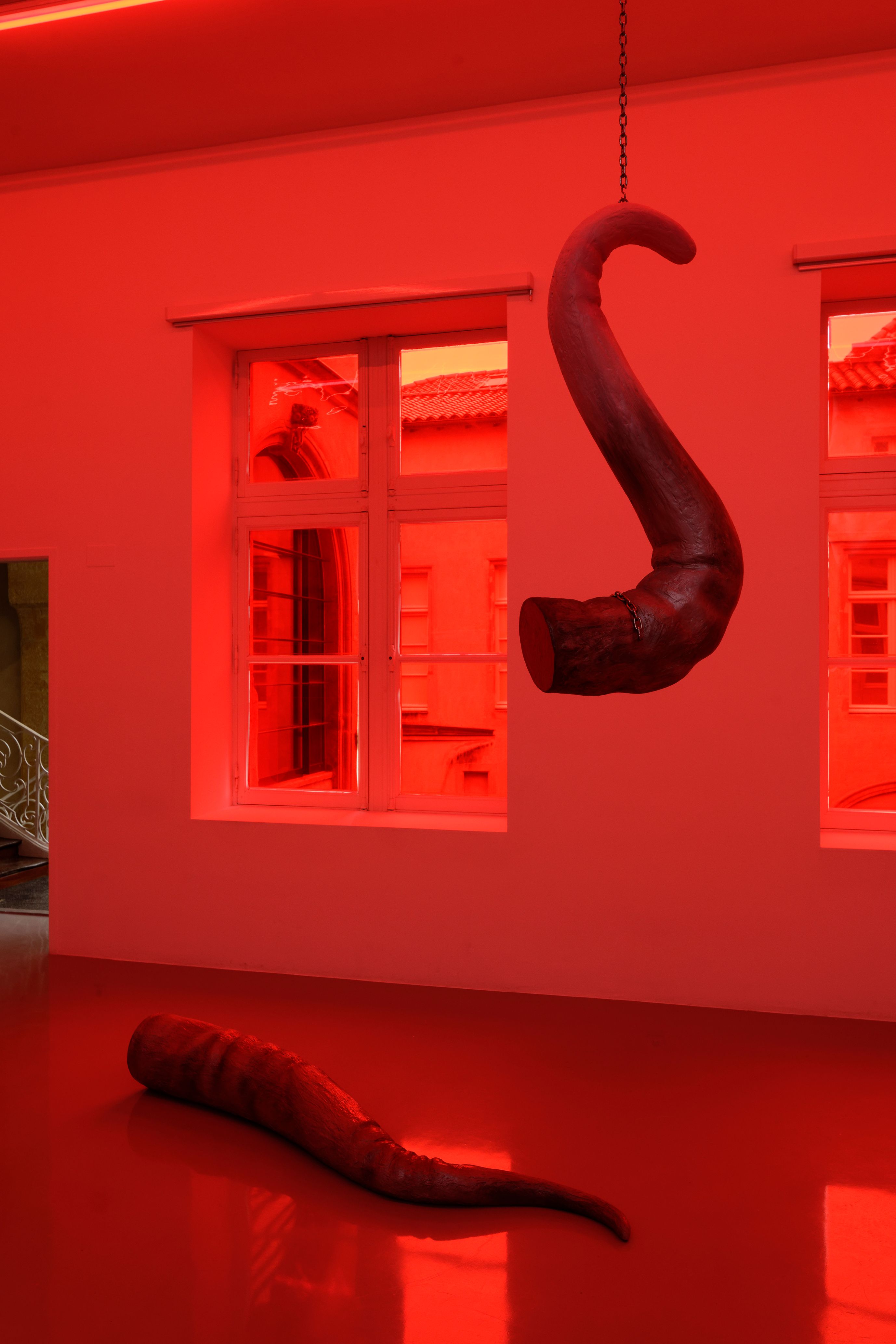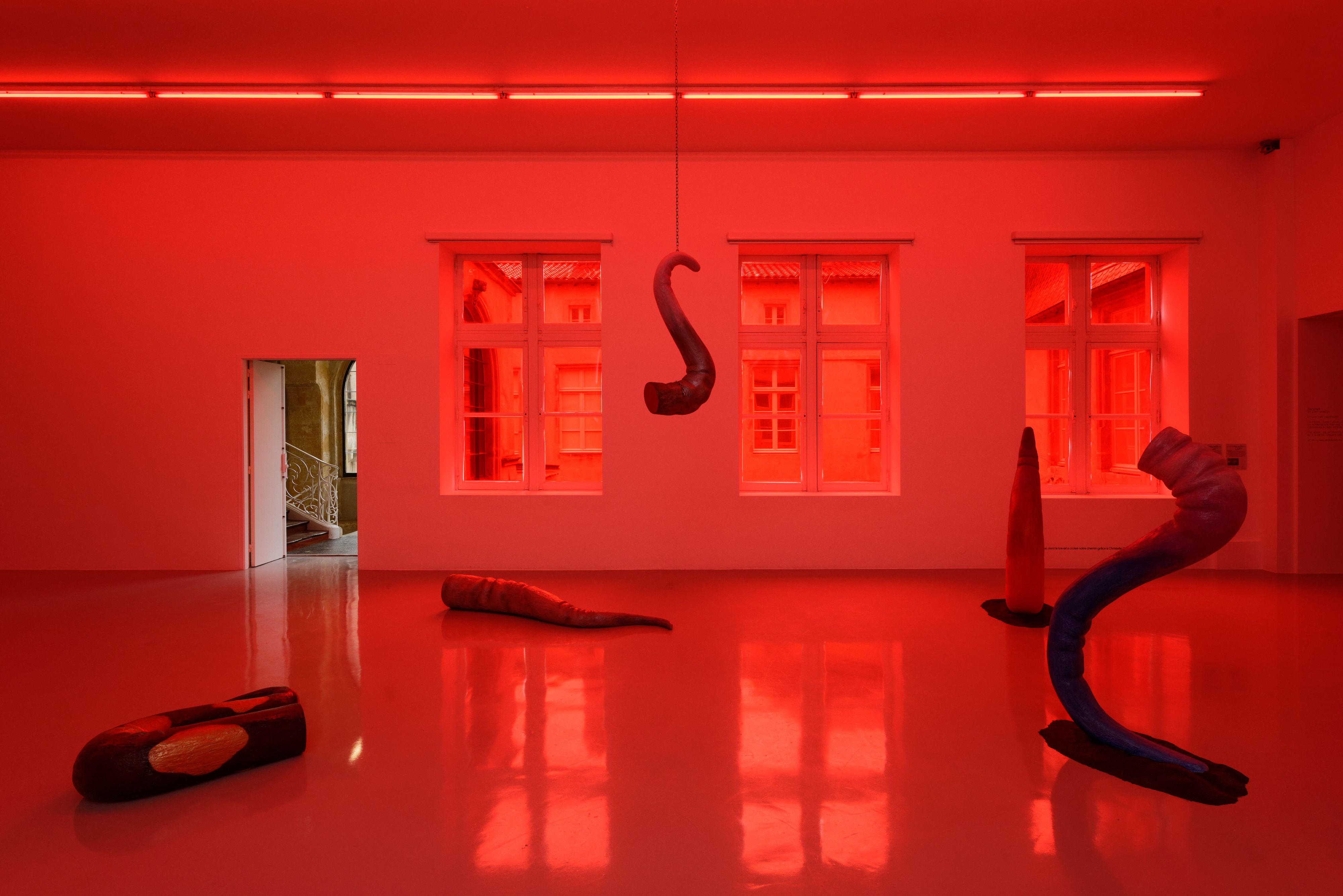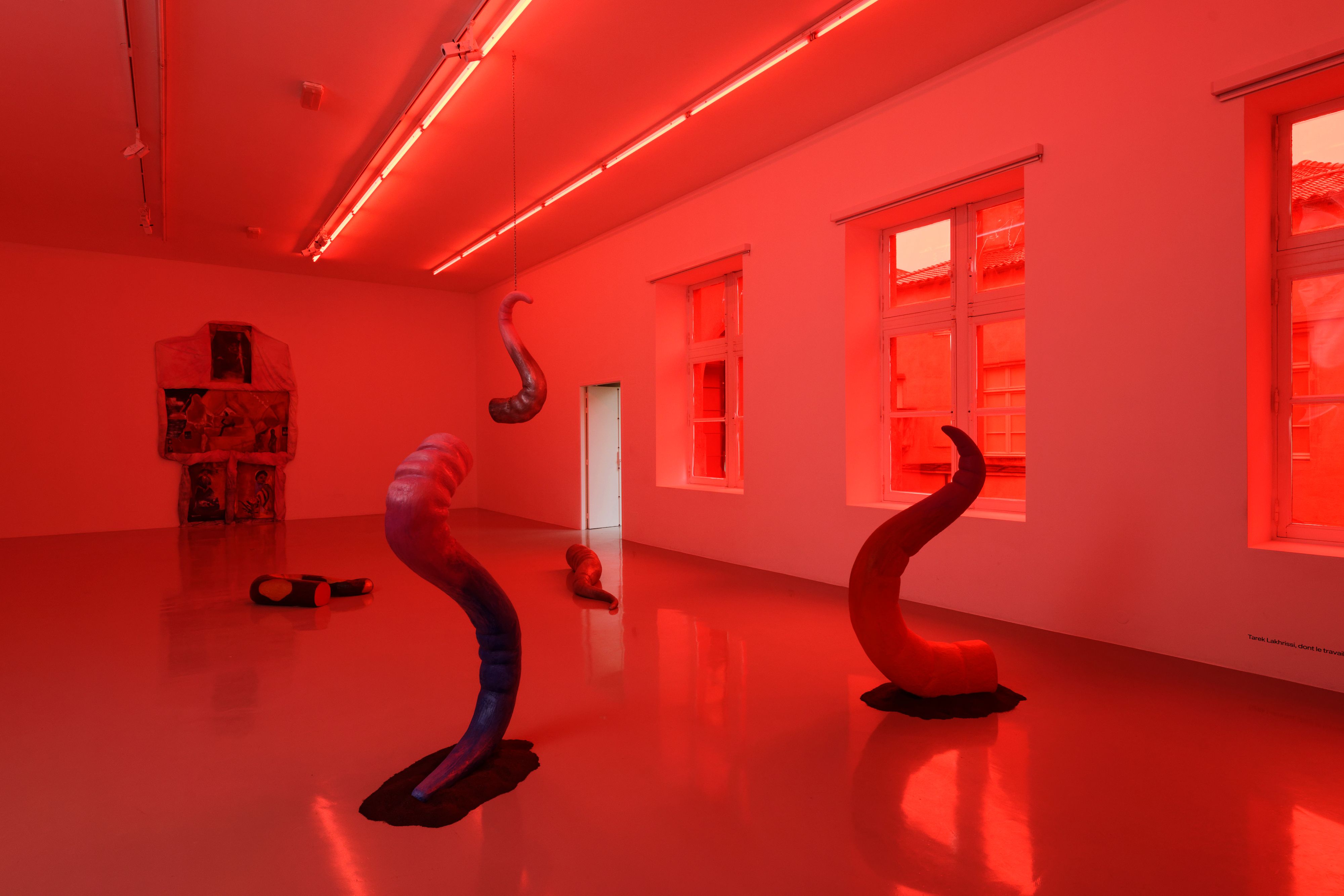
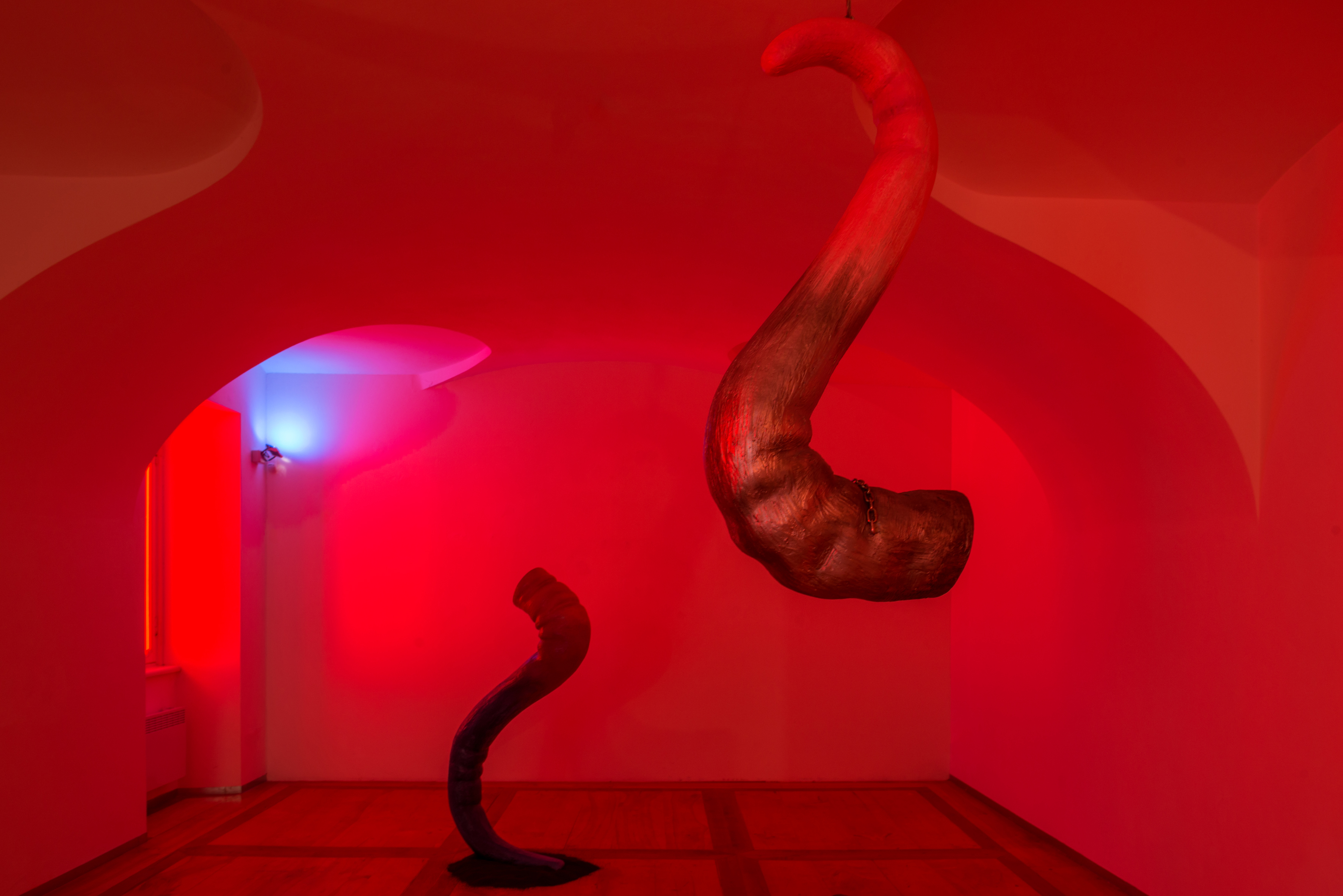
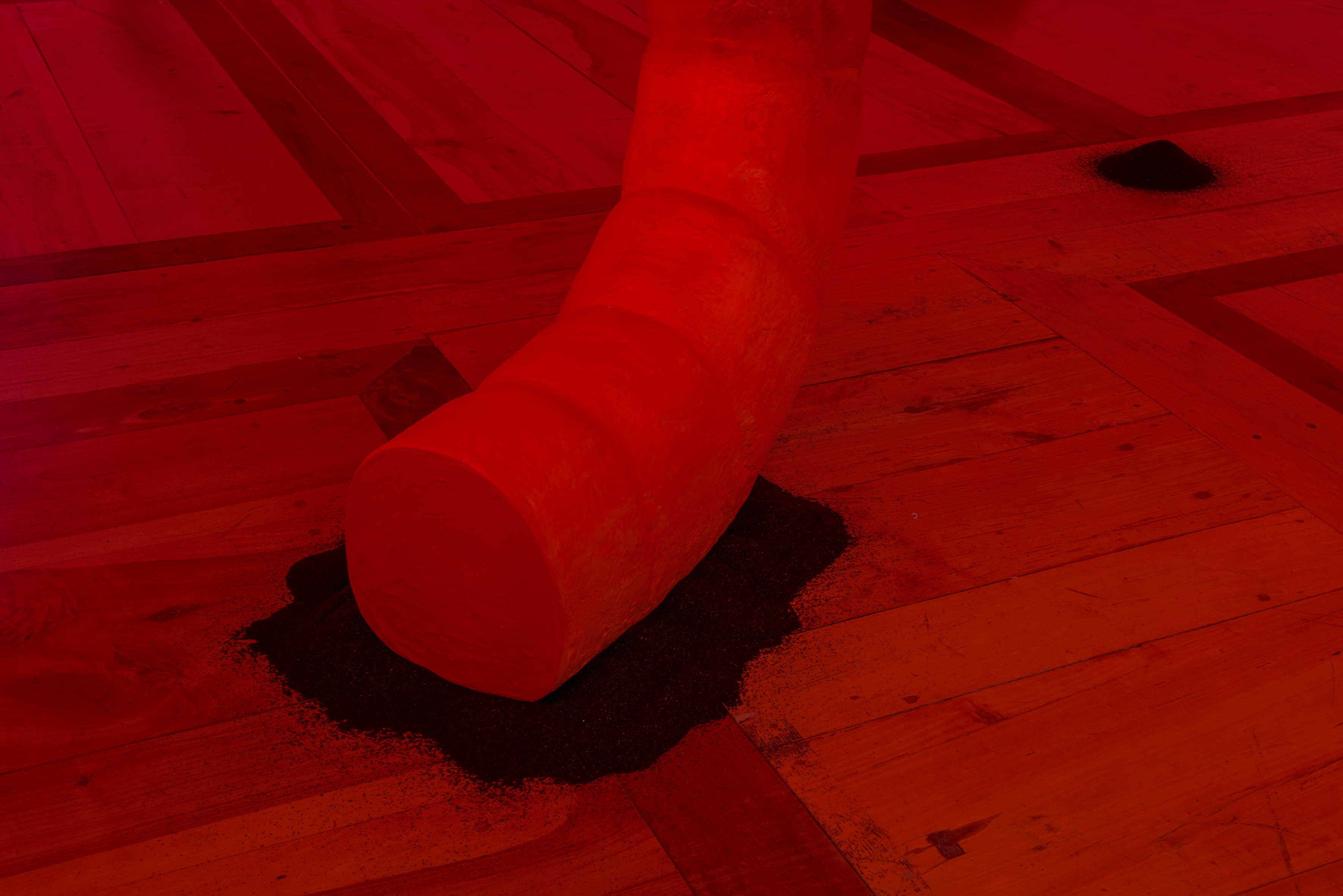
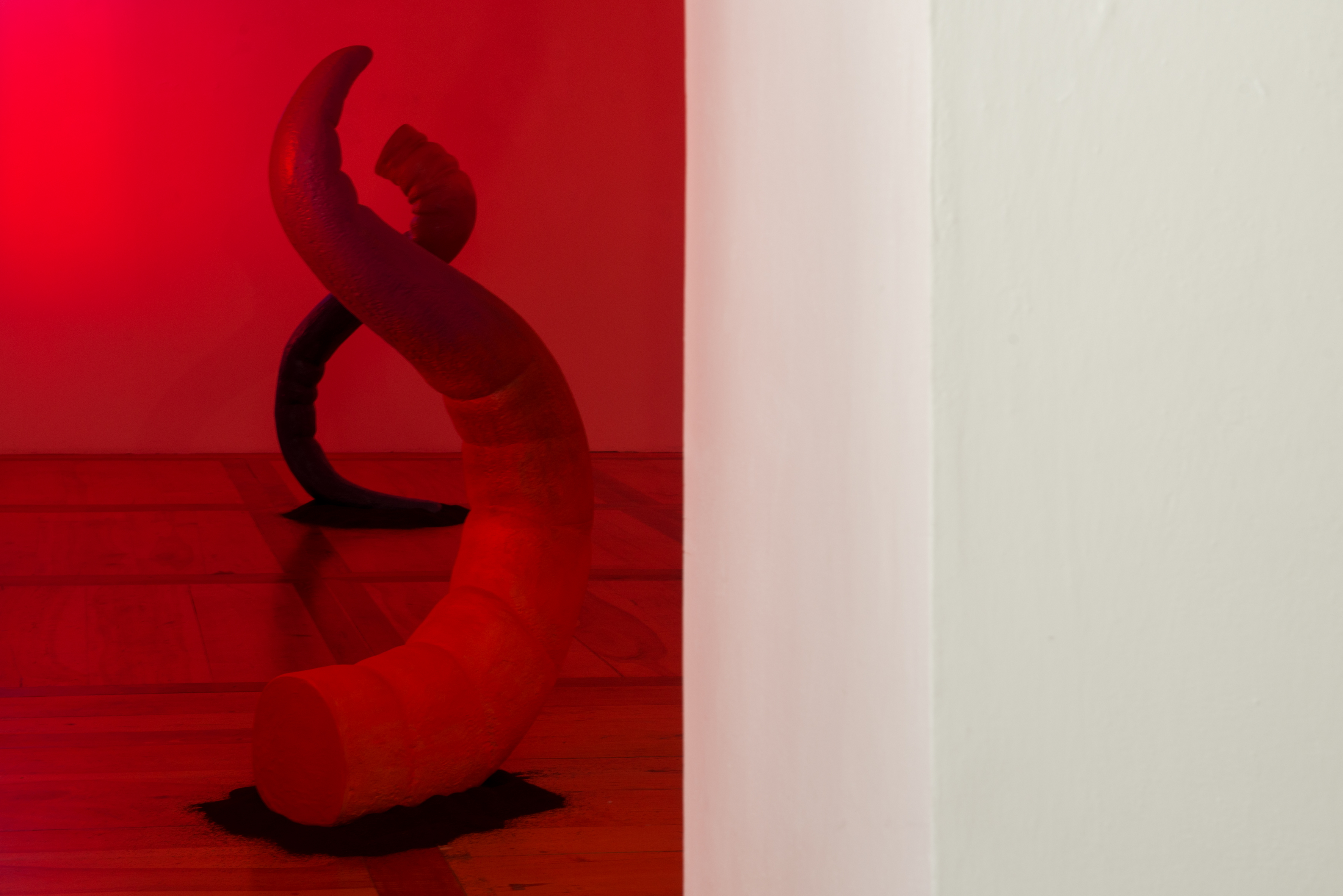
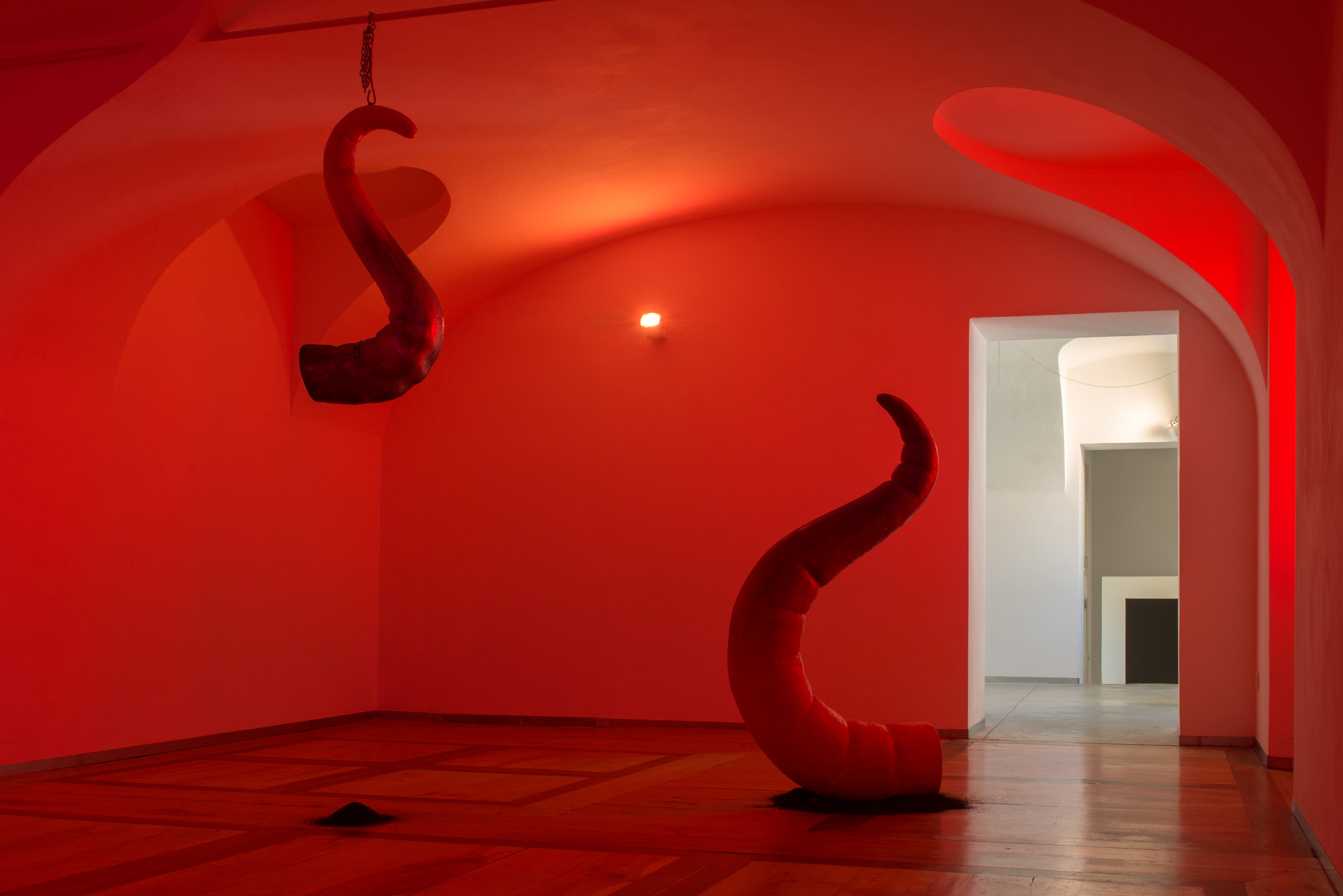




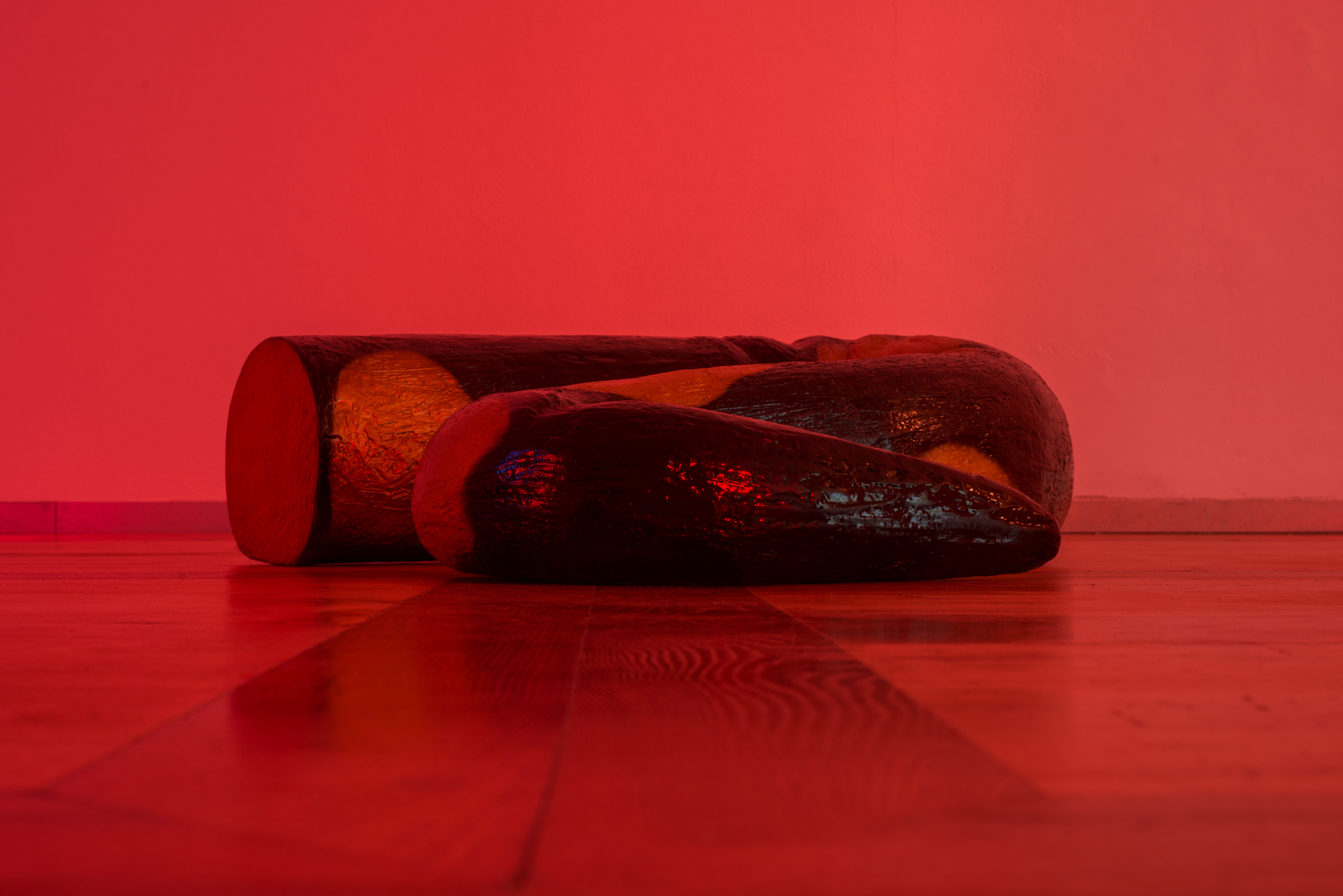
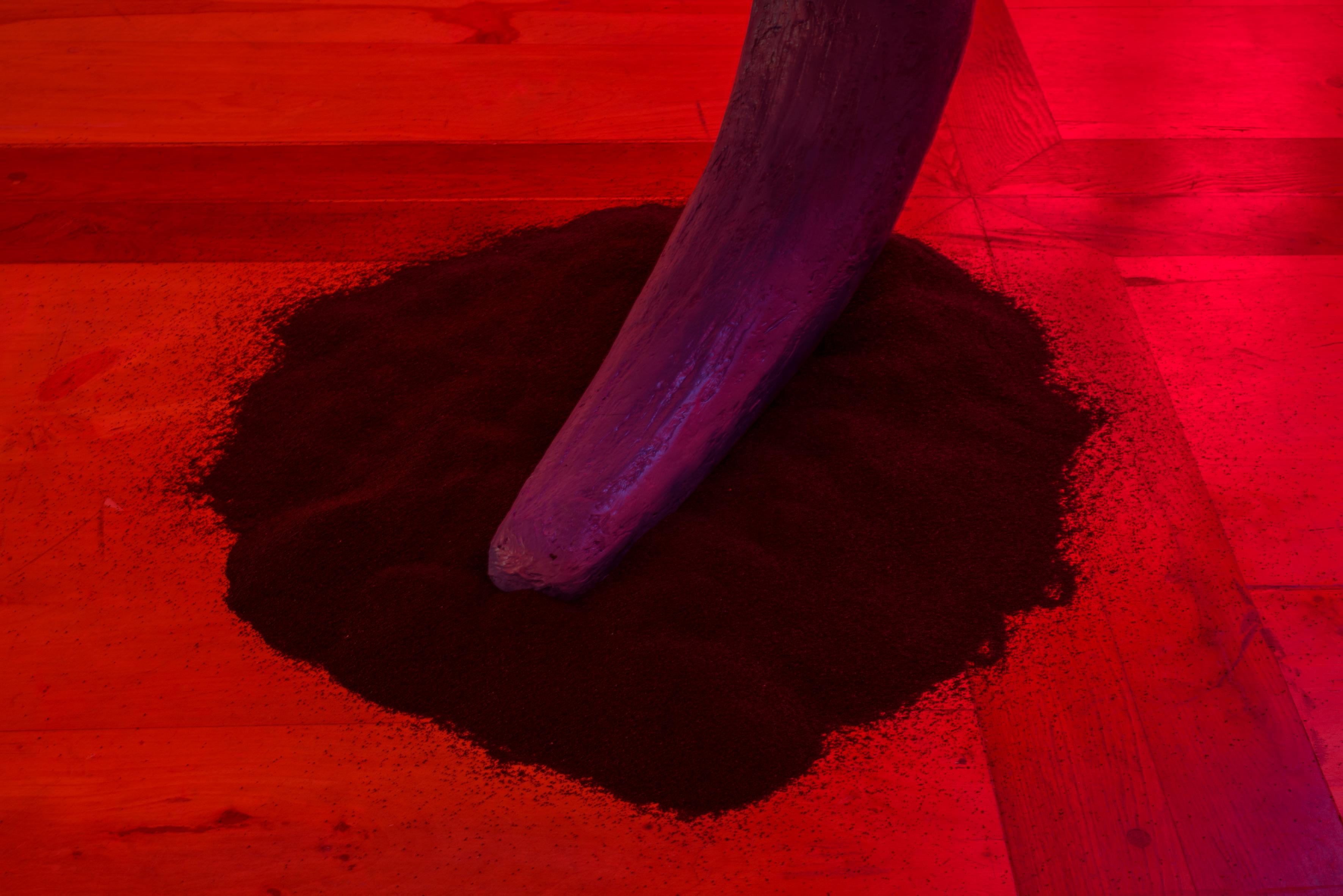
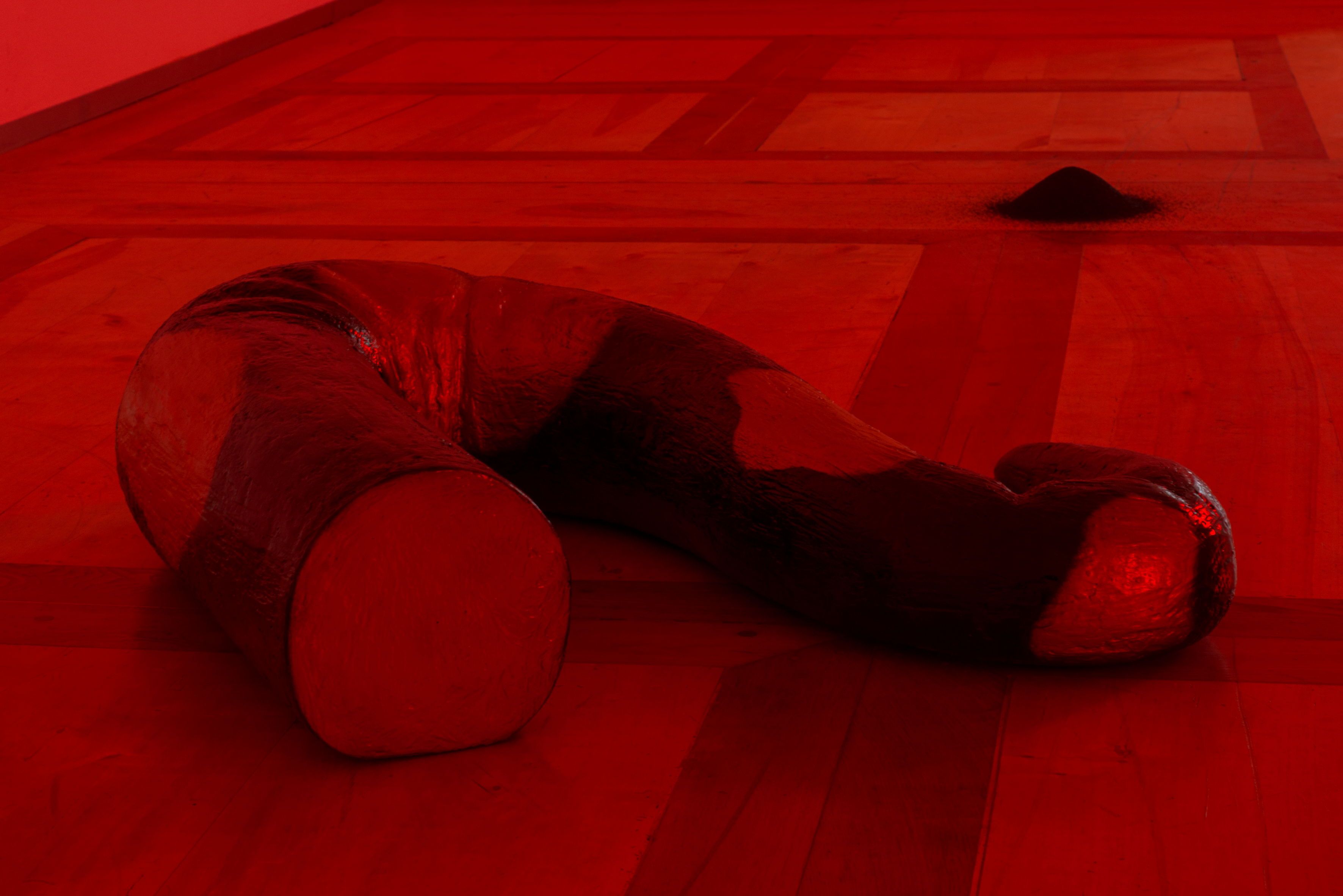
“This Doesn’t Belong to Me” presents a cycle of newly commissioned works the artist conceived specifically for the spaces of Palazzo Re Rebaudengo in Guarene (CN). The exhibition explores the concept of self-defence, interpreted as a practice of resistance developed by different social groups and subaltern bodies in order to survive. The image at the core of this cycle of artworks is that of the salamander: since Medieval bestiaries, this amphibian is said to be endowed with venom and able to survive among flames. In the show, the salamander becomes a symbol for counterpower, of both a political and sexual nature, which in performing self-defence rewrites the rules of conflict and connection. Autotomy – or the self-amputation of non-vital body parts, practiced by certain animals as a diversion for their predators – becomes the defensive tactic identified by Lakhrissi to imagine new strategies of urban guerrilla. The exhibition path of “This Doesn’t Belong to Me” begins with a ceiling installation composed of silver chainlets – talismans for protection in everyday life, which are also reminiscent of the instruments of pleasure employed in BDSM practices. The following room portrays a deferred scene, in which the conflict or intercourse has already taken place. The space is populated by a group of five sculptures in the shape of grotesque, out-of-scale salamander tails, which create a dream-like scenery evocatively dominated by the element of fire. The environment suggests a tension between visibility and absence, where the body is assumed as a platform continuously under construction and deconstruction, rather than an inalienable identity structure. In Lakhrissi’s representation, self-defence is a process of disidentification, the “strategy for survival and subversion” mentioned by José Esteban Muñoz. But more than that, it is a counteroffensive action, similar to the one described by Elsa Dorlin in her Se défendre: une philosophie de la violence [Self-defence: A philosophy of violence] (2018): “a different semiology of the militant body, which doesn’t rely on the exemplary nature of its own martyrdom, but rather on the relentless and inevitable nature of its revenge – that doesn’t belong to the metaphysics of purposes,
but rather to the immediacy of a strike”. (Bernardo Follini)
but rather to the immediacy of a strike”. (Bernardo Follini)
